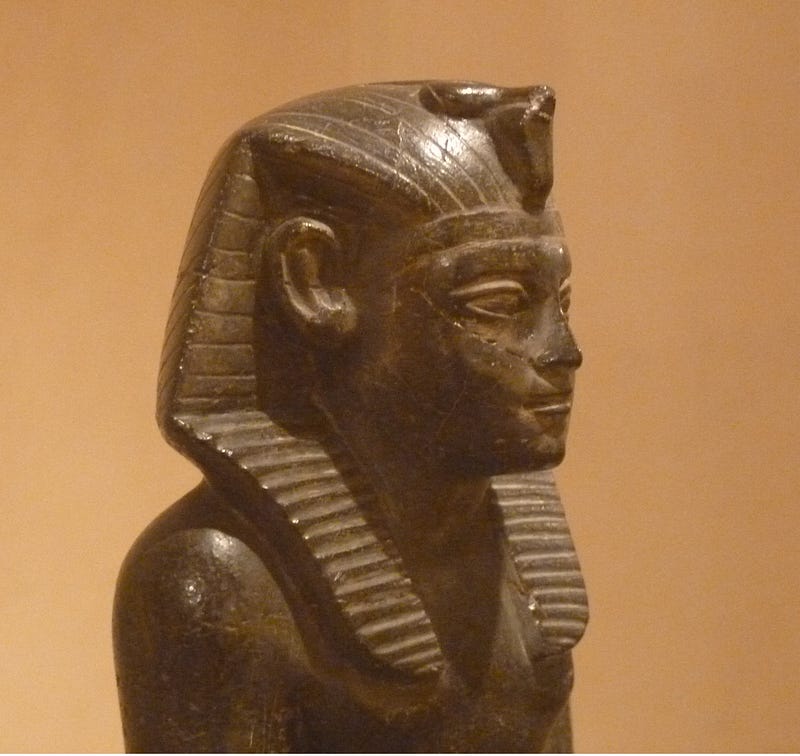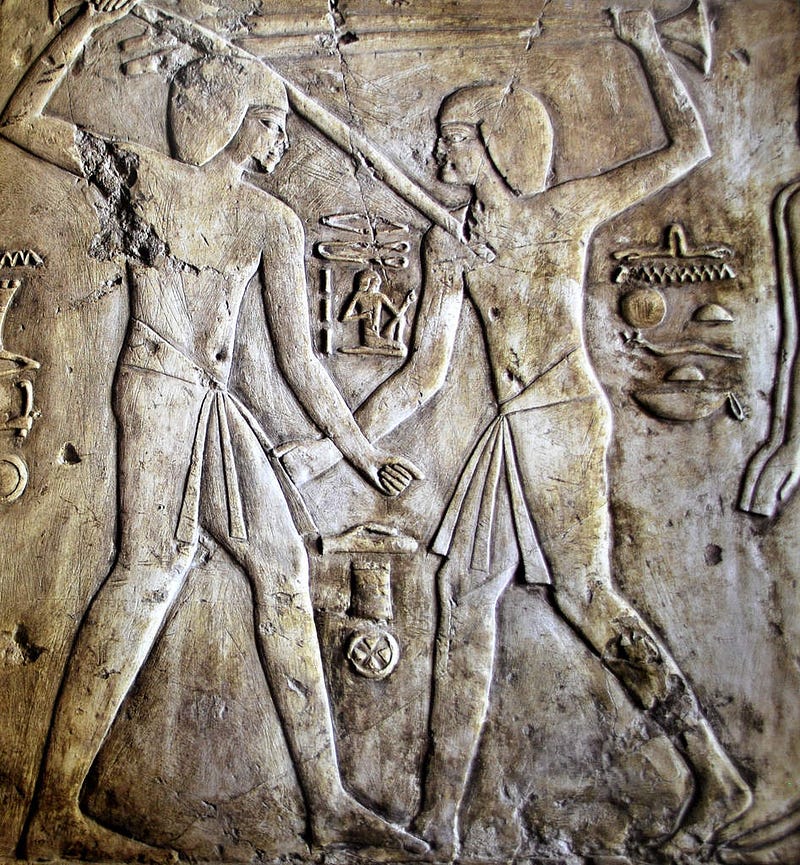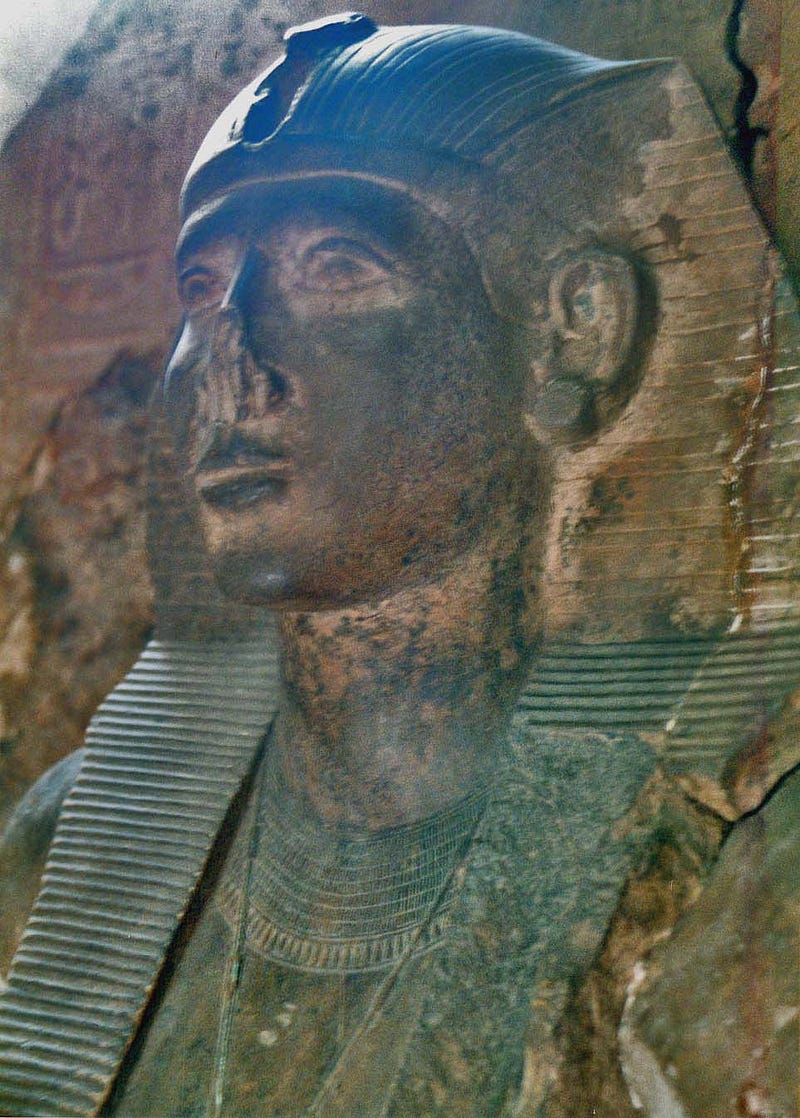Unveiling the Tomb of a Revered Servant of the Deities in Egypt
Written on
Chapter 1: Introduction to Neferhotep
Neferhotep, the chief scribe for the god Amun, has left behind a remarkable legacy. After extensive restoration efforts spanning two decades, his ornate tomb has finally opened to the public. This dignitary lived during the tumultuous era of Pharaoh Tutankhamun.

Neferhotep’s final resting place is situated in the Theban necropolis in Upper Egypt, close to modern-day Luxor. The renowned temple of Queen Hatshepsut can be found nearby, while the Valley of the Kings, where many New Kingdom pharaohs are interred, lies just beyond the ridge. The landscape is dotted with an array of tombs, resembling a Swiss cheese structure.
Neferhotep’s tomb, designated as el-Chocha, is one among many that have been carved into the hills of Thebes. Adjacent to it is the North Asasif necropolis, where archaeologists have been diligently conducting research for years. These tombs date back to the Middle Kingdom period (2050–1760 BCE).
In the 19th century, Europeans stumbled upon Neferhotep’s tomb, which remained accessible for many years, sometimes even occupied. Historical photos depict a family residing there alongside sheep and goats. Evidence suggests that fires were lit inside, resulting in thick soot that obscured the intricate paintings. Archaeologists have also found signs of mummified remains being burned, which contributed to the deterioration of these beautiful artworks.
The tombs from the New Kingdom period are often the most lavishly decorated, and Neferhotep’s is no exception. Due to the deteriorating state of the artwork, access was restricted to tourists in 1980. In the last two decades, extensive documentation and conservation efforts have been undertaken, with specialists from Germany and Argentina playing crucial roles.

The restoration process began in 2000, led by an expedition from the University of Buenos Aires, which focused on the epigraphic and archaeological aspects of the tomb, while German teams concentrated on conserving the murals and rock walls. This task was labor-intensive and challenging, utilizing specialized lasers for the first time in Egypt to effectively clean the surfaces without harming the original pigments.
The entrance to this rock-cut tomb opens from the courtyard, leading to several other smaller and less significant tombs. The first chamber serves as a transverse hall, which opens into a spacious room supported by four pillars. At the end of this room are statues of Neferhotep and his wife, Merytre. The burial chamber is situated on a lower level, where relatives could present offerings in front of the statues, although they were not permitted access to the sarcophagus. The upper walls of the tomb are adorned with paintings that depict the joyful and prosperous afterlife envisioned for its occupant.

Who Was Neferhotep?
Neferhotep's life coincided with that of the legendary Pharaoh Tutankhamun, approximately 3300 years ago. However, Tutankhamun's reign was notably brief, ending with his death at just 17 or 18 years of age, while Neferhotep likely lived much longer. He held numerous significant positions during the reigns of pharaohs Ay and Horemheb.
Among his many titles, one of the most distinguished was that of the chief scribe of the god Amun. This role involved serving the influential clergy associated with Amun, a god of considerable importance in ancient Egypt. A vast workforce supported the temple districts in Thebes, including farmers and artisans, with storage facilities for agricultural goods located near the sacred sites.
Neferhotep’s responsibilities likely centered around overseeing the temple's revenues, reviewing reports from scribes who documented the temple's agricultural income.
Chapter 2: Insights from Recent Discoveries
The first video, titled "Servants of the Serpent Goddess (Full Episode) | Kingdom of the Mummies," explores the cultural significance of ancient Egyptian beliefs and practices surrounding the afterlife.
The second video, "Tomb Raiders (Full Episode) | Lost Treasures of Egypt," delves into the adventures and discoveries made in the quest for ancient Egyptian treasures, shedding light on the historical context of tomb raiding.
Exploring the Playful Nature of Primate Humor
Recent studies have unveiled that certain primates exhibit a sense of humor, engaging in playful teasing behaviors.
Dear Readers,
I would like to address a challenge faced by content creators like myself on Medium.com. Despite our dedication to producing valuable content, the compensation often falls short. If you appreciate my work, please consider supporting me through my “Buy Me a Coffee” page. Your contributions, regardless of size, can inspire me to keep delivering engaging and thought-provoking articles. Thank you for being a part of this journey!

